In Java, a collection is an object, or we can say a container, used to combine multiple objects into a unit. The collection interface is at the root of all collection framework interfaces. We can perform various operations on collections such as adding, deleting, iterating, searching and retrieving objects. Please note that they cannot be used with primitive data types (such as int, double). However, Java provides wrapper classes that can use primitive data types as objects. We will use these objects to manipulate the collection interface.
In this article, we will make a Java program that shows the use of Collection interface. We will also discuss several sub-interfaces and methods of the Collection interface.
The Chinese translation ofCollection Interface
is:Collection Interface
Hierarchical structure of collection interface

grammar
Collection<element_Type> collection_name = new Collection<element_Type>(); Or, Collection<element_Type> collection_name = new Collection<>();
Example
ArrayList<Integer> al = new ArrayList<>();
‘al’ is the name of the array list collection collection_name.
‘Integer’ is the type of element we want to store. Note that this is an object and not a primitive type.
‘ArrayList’ is a collection.
It is important to import the 'java.util' package because the collection interface is available in this package. To import, use the following command -
import java.util.*;
Here, * means that we import all classes and methods in this package into our program.
Let’s discuss the sub-interfaces of the collection interface -
List − It is a sub-interface of the java Collection interface. It is a linear structure where each element is stored and accessed sequentially. To use the features of list, we will use ArrayList and LinkedList classes that implement the list interface.
Set − It is a sub-interface of the java Collection interface and does not allow duplicate values. It is similar to a mathematical set. In order to use the set's features, we will use the hash set class that implements the set interface.
Queue - It provides the features of a queue data structure. The queue follows the first-in-first-out (FIFO) principle.
We will use some built-in methods in our program −
add() − Used to add an element to the end of the list.
hasNext() − Returns true if the element exists, otherwise returns false.
next() − Displays the next element of the list.
iterator() − Used to traverse the list.
get() − It returns the element at the specified index.
size() − It returns the number of elements in the list.
Show the program using Collection interface
The Chinese translation ofExample 1
is:Example 1
The following program demonstrates the use of the collection interface:
import java.util.*;
public class Listcol {
public static void main(String[] args) {
// Creating arraylist
ArrayList<Integer> araylist = new ArrayList<>();
// Adding elements in arraylist
araylist.add(8);
araylist.add(5);
araylist.add(2);
araylist.add(9);
araylist.add(4);
araylist.add(7);
System.out.println("Elements of the Arraylist : " + araylist);
// Creating Linkedlist
LinkedList<Integer> list2 = new LinkedList<>();
// Adding elements in linkedlist
list2.add(8);
list2.add(4);
list2.add(1);
list2.add(0);
System.out.println("Elements of the Linkedlist : " + list2);
// Creating Set
HashSet<Integer> set = new HashSet<>();
// Adding elements in Hashset
set.add(9);
set.add(6);
set.add(1);
set.add(3);
System.out.println("Elements of the HashSet : " + set);
// Creating Queue
Queue<String> queue = new PriorityQueue<>();
// Adding elements in queue
queue.add("Tutorix");
queue.add("Tutorialspoint");
queue.add("Tutorial");
System.out.println("Elements of the Queue : " + queue);
}
}
Output
Elements of the Arraylist : [8, 5, 2, 9, 4, 7] Elements of the Linkedlist : [8, 4, 1, 0] Elements of the HashSet : [1, 3, 6, 9] Elements of the Queue : [Tutorial, Tutorix, Tutorialspoint]The Chinese translation of
Example 2
is:Example 2
Let’s see how to iterate over the elements in a list using a for loop.
import java.util.*;
public class RunningSum {
public static void main(String[] args) {
// Creating arraylist
ArrayList<Integer> araylist = new ArrayList<Integer>();
// Adding elements in arraylist
araylist.add(8);
araylist.add(5);
araylist.add(2);
araylist.add(9);
araylist.add(4);
araylist.add(7);
System.out.println("Elements of the list : ");
// loop to iterate through elements
for(int i = 0; i < araylist.size(); i++ ) {
// to print the elements in the list
System.out.println(araylist.get(i));
}
}
}
Output
Elements of the list : 8 5 2 9 4 7
Example 3
In this example, we will see how to iterate over the elements of a list using the Iterator interface.
import java.util.*;
public class Listcol {
public static void main(String[] args) {
// Creating arraylist
ArrayList<Integer> araylist = new ArrayList<Integer>();
// Adding elements in arraylist
araylist.add(8);
araylist.add(5);
araylist.add(2);
araylist.add(9);
araylist.add(4);
araylist.add(7);
System.out.println("Elements of the list : ");
// creating iterator interface to iterate through elements
Iterator<Integer> itr = araylist.iterator();
while (itr.hasNext()) {
// to print the elements in the list
System.out.println(itr.next());
}
}
}
Output
Elements of the list : 8 5 2 9 4 7
in conclusion
In this article, we have discussed the classes and methods that implement different collection interfaces. We have seen program to understand the use of these interfaces. They are mainly used to group objects. Also, we discussed about iterator interface.
The above is the detailed content of Demonstrates a Java program using the collections framework. For more information, please follow other related articles on the PHP Chinese website!
 如何利用Vue实现图片的缩略图生成和展示?Aug 21, 2023 pm 09:58 PM
如何利用Vue实现图片的缩略图生成和展示?Aug 21, 2023 pm 09:58 PM如何利用Vue实现图片的缩略图生成和展示?Vue是一款流行的JavaScript框架,用于构建用户界面。它提供了丰富的功能和灵活的设计,使得开发者能够轻松地构建交互性强,响应迅速的应用程序。本文将介绍如何利用Vue实现图片的缩略图生成和展示。安装和引入Vue.js首先,需要安装Vue.js。可以通过CDN引入Vue.js,或者使用npm进行安装。通过CDN引
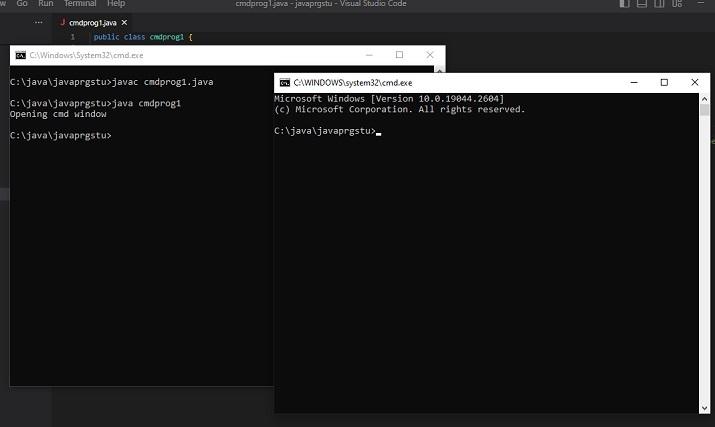 Java程序打开命令提示符并插入命令Aug 19, 2023 pm 12:29 PM
Java程序打开命令提示符并插入命令Aug 19, 2023 pm 12:29 PMThisarticleusesvariousapproachesforselectingthecommandsinsertedintheopenedcommandwindowthroughtheJavacode.Thecommandwindowisopenedbyusing‘cmd’.Here,themethodsofdoingthesamearespecifiedusingJavacode.TheCommandwindowisfirstopenedusingtheJavaprogram.Iti
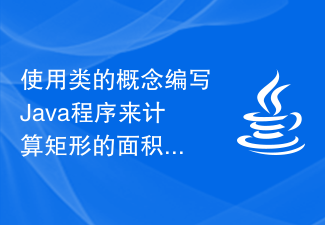 使用类的概念编写Java程序来计算矩形的面积和周长Sep 03, 2023 am 11:37 AM
使用类的概念编写Java程序来计算矩形的面积和周长Sep 03, 2023 am 11:37 AMJava语言是当今世界上最常用的面向对象编程语言之一。类的概念是面向对象语言中最重要的特性之一。一个类就像一个对象的蓝图。例如,当我们想要建造一座房子时,我们首先创建一份房子的蓝图,换句话说,我们创建一个显示我们将如何建造房子的计划。根据这个计划,我们可以建造许多房子。同样地,使用类,我们可以创建许多对象。类是创建许多对象的蓝图,其中对象是真实世界的实体,如汽车、自行车、笔等。一个类具有所有对象的特征,而对象具有这些特征的值。在本文中,我们将使用类的概念编写一个Java程序,以找到矩形的周长和面
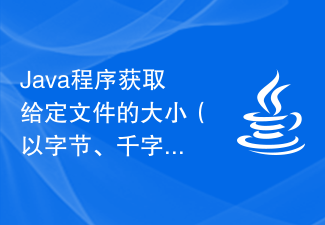 Java程序获取给定文件的大小(以字节、千字节和兆字节为单位)Sep 06, 2023 am 10:13 AM
Java程序获取给定文件的大小(以字节、千字节和兆字节为单位)Sep 06, 2023 am 10:13 AM文件的大小是特定文件在特定存储设备(例如硬盘驱动器)上占用的存储空间量。文件的大小以字节为单位来衡量。在本节中,我们将讨论如何实现一个java程序来获取给定文件的大小(以字节、千字节和兆字节为单位)。字节是数字信息的最小单位。一个字节等于八位。1千字节(KB)=1,024字节1兆字节(MB)=1,024KB千兆字节(GB)=1,024MB和1太字节(TB)=1,024GB。文件的大小通常取决于文件的类型及其包含的数据量。以文本文档为例,文件的大小可能只有几千字节,而高分辨率图像或视频文件的大小可
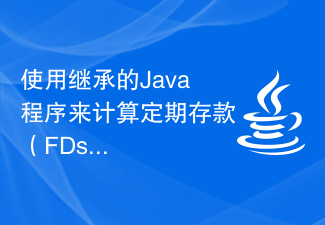 使用继承的Java程序来计算定期存款(FDs)和定期存款(RDs)的利息Aug 20, 2023 pm 10:49 PM
使用继承的Java程序来计算定期存款(FDs)和定期存款(RDs)的利息Aug 20, 2023 pm 10:49 PM继承是一个概念,它允许我们从一个类访问另一个类的属性和行为。被继承方法和成员变量的类被称为超类或父类,而继承这些方法和成员变量的类被称为子类或子类。在Java中,我们使用“extends”关键字来继承一个类。在本文中,我们将讨论使用继承来计算定期存款和定期存款的利息的Java程序。首先,在您的本地机器IDE中创建这四个Java文件-Acnt.java−这个文件将包含一个抽象类‘Acnt’,用于存储账户详情,如利率和金额。它还将具有一个带有参数‘amnt’的抽象方法‘calcIntrst’,用于计
 Java程序用于检查TPP学生是否有资格参加面试Sep 06, 2023 pm 10:33 PM
Java程序用于检查TPP学生是否有资格参加面试Sep 06, 2023 pm 10:33 PM请考虑下表了解不同公司的资格标准-CGPA的中文翻译为:绩点平均成绩符合条件的公司大于或等于8谷歌、微软、亚马逊、戴尔、英特尔、Wipro大于或等于7教程点、accenture、Infosys、Emicon、Rellins大于或等于6rtCamp、Cybertech、Skybags、Killer、Raymond大于或等于5Patronics、鞋子、NoBrokers让我们进入java程序来检查tpp学生参加面试的资格。方法1:使用ifelseif条件通常,当我们必须检查多个条件时,我们会使用
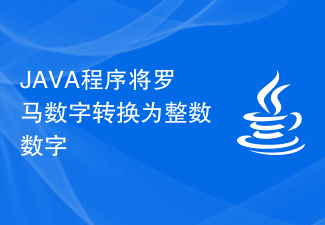 JAVA程序将罗马数字转换为整数数字Aug 25, 2023 am 11:41 AM
JAVA程序将罗马数字转换为整数数字Aug 25, 2023 am 11:41 AM罗马数字-基于古罗马系统,使用符号来表示数字。这些数字称为罗马数字。符号为I、V、X、L、C、D和M,分别代表1、5、10、50、100、500和1,000。整数-整数就是由正值、负值和零值组成的整数。分数不是整数。这里我们根据整数值设置符号值。每当输入罗马数字作为输入时,我们都会将其划分为单位,然后计算适当的罗马数字。I-1II–2III–3IV–4V–5VI–6...X–10XI–11..XV-15在本文中,我们将了解如何在Java中将罗马数字转换为整数。向您展示一些实例-实例1InputR
 Java程序创建金字塔和图案Sep 05, 2023 pm 03:05 PM
Java程序创建金字塔和图案Sep 05, 2023 pm 03:05 PM如果有人想在Java编程语言方面打下坚实的基础。然后,有必要了解循环的工作原理。此外,解决金字塔模式问题是增强Java基础知识的最佳方法,因为它包括for和while循环的广泛使用。本文旨在提供一些Java程序,借助Java中可用的不同类型的循环来打印金字塔图案。创建金字塔图案的Java程序我们将通过Java程序打印以下金字塔图案-倒星金字塔星金字塔数字金字塔让我们一一讨论。模式1:倒星金字塔方法声明并初始化一个指定行数的整数“n”。接下来,将空间的初始计数定义为0,将星形的初始计数定义为“n+


Hot AI Tools

Undresser.AI Undress
AI-powered app for creating realistic nude photos

AI Clothes Remover
Online AI tool for removing clothes from photos.

Undress AI Tool
Undress images for free

Clothoff.io
AI clothes remover

AI Hentai Generator
Generate AI Hentai for free.

Hot Article

Hot Tools

EditPlus Chinese cracked version
Small size, syntax highlighting, does not support code prompt function

SublimeText3 English version
Recommended: Win version, supports code prompts!

MinGW - Minimalist GNU for Windows
This project is in the process of being migrated to osdn.net/projects/mingw, you can continue to follow us there. MinGW: A native Windows port of the GNU Compiler Collection (GCC), freely distributable import libraries and header files for building native Windows applications; includes extensions to the MSVC runtime to support C99 functionality. All MinGW software can run on 64-bit Windows platforms.

SublimeText3 Linux new version
SublimeText3 Linux latest version

SAP NetWeaver Server Adapter for Eclipse
Integrate Eclipse with SAP NetWeaver application server.







